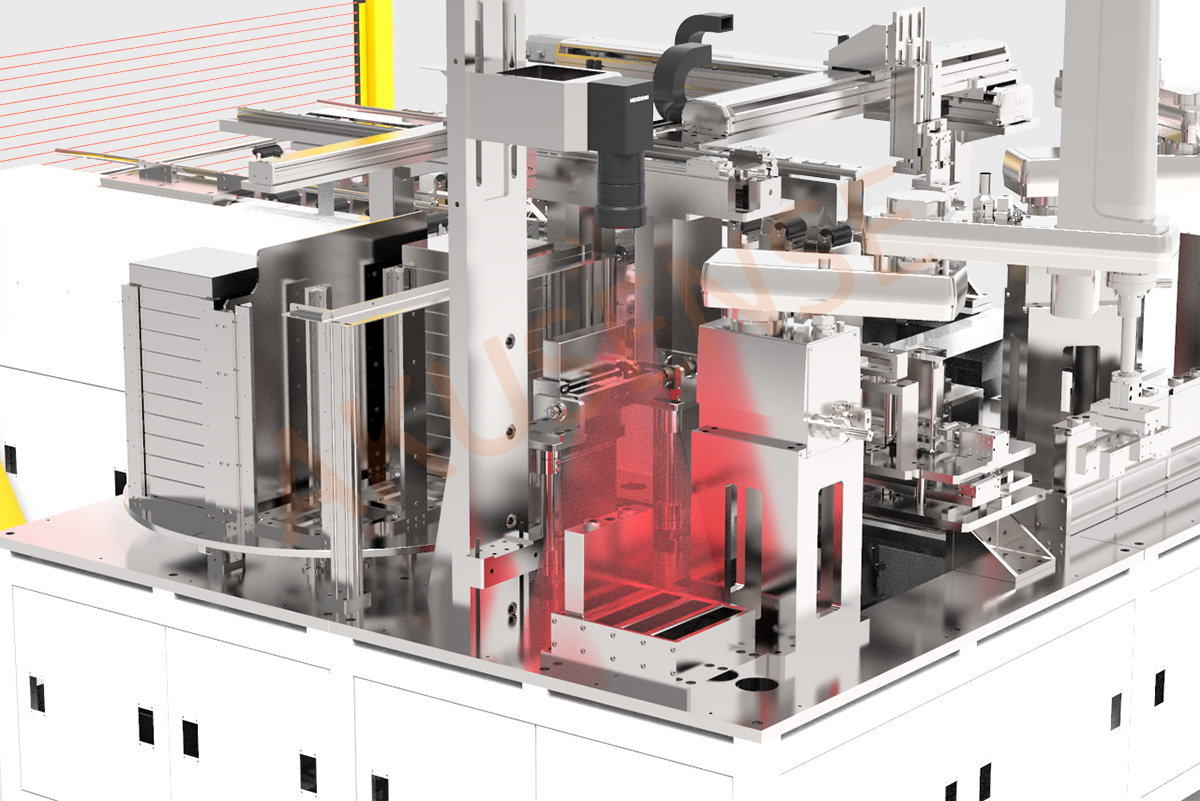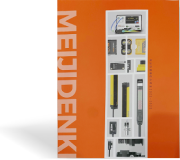How Can We Use Sensors on In-shell Devices to Empower Smart Manufacturing of Lithium Battery

How Can We Use Sensors on In-shell Devices to Empower Smart Manufacturing of Lithium Battery
It is complex to choose sensors in lithium projects,but it can be very typical in model selection.Not only it covers a wide range of applications from common transducers,like slot sensors, photoelectric sensors, proximity sensors and magnetic sensors, butIt is complex to choose sensors in lithium projects,but it can be very typical in model selection.Not only it covers a wide range of applications from common transducers,like slot sensors, photoelectric sensors, proximity sensors and magnetic sensors, but also intelligent code readers, safety light curtains and visual inspection. There are also many difficulties, such as highly reflective workstations, narrow installation spaces, special character extraction and the entry of various QR codes.
Akusense focuses on innovating complete sets of transducer solutions in 3C and Li-battery equipment.In previous articles, we have mentioned a large number of processes in the lithium battery,such as first-process with the coating machine, core lug cutting;mid-process with laminating machine, the winding machine, laser welding;last-process with wrapping machine and intelligent storage.
Now,we would like to share with you several sensor applications on in-shell devices.
01 Protection of the Loading and Unloading Area of the Battery Case Tray
There is a risk of mechanical movement and injury in the feeding area, so the area safety obstacle avoidance type light curtain BSL40-T3206NC is adopted to stop some mechanisms when someone or a car enters the protection range to avoid mechanical damage.
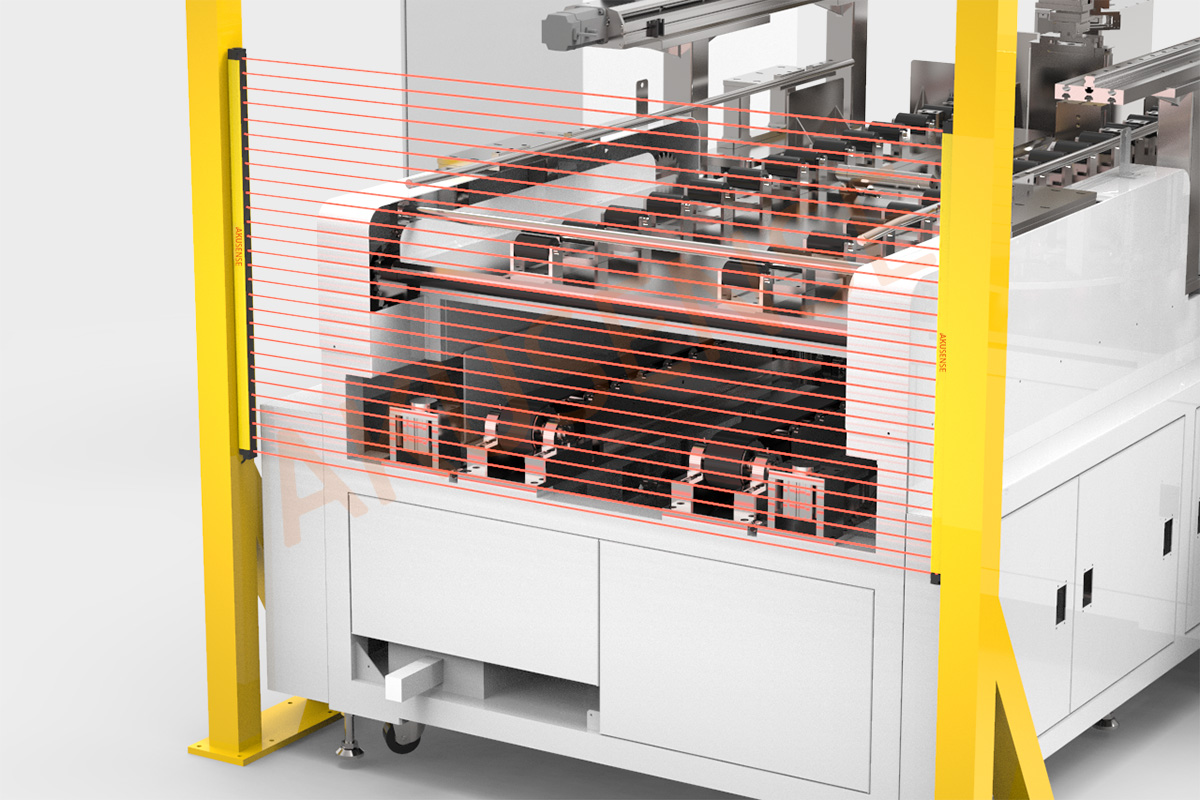
02 In-Position Sensing of Loading and Unloading Trolley
The proximity sensor TLN12-08NO, with twice longer detection distance than the standard product, can effectively solve the problem of work installation space conflicts. When the trolley reaches the loading position, the sensor sends a signal to drive the belt conveyor. The feeding tray enters the station.
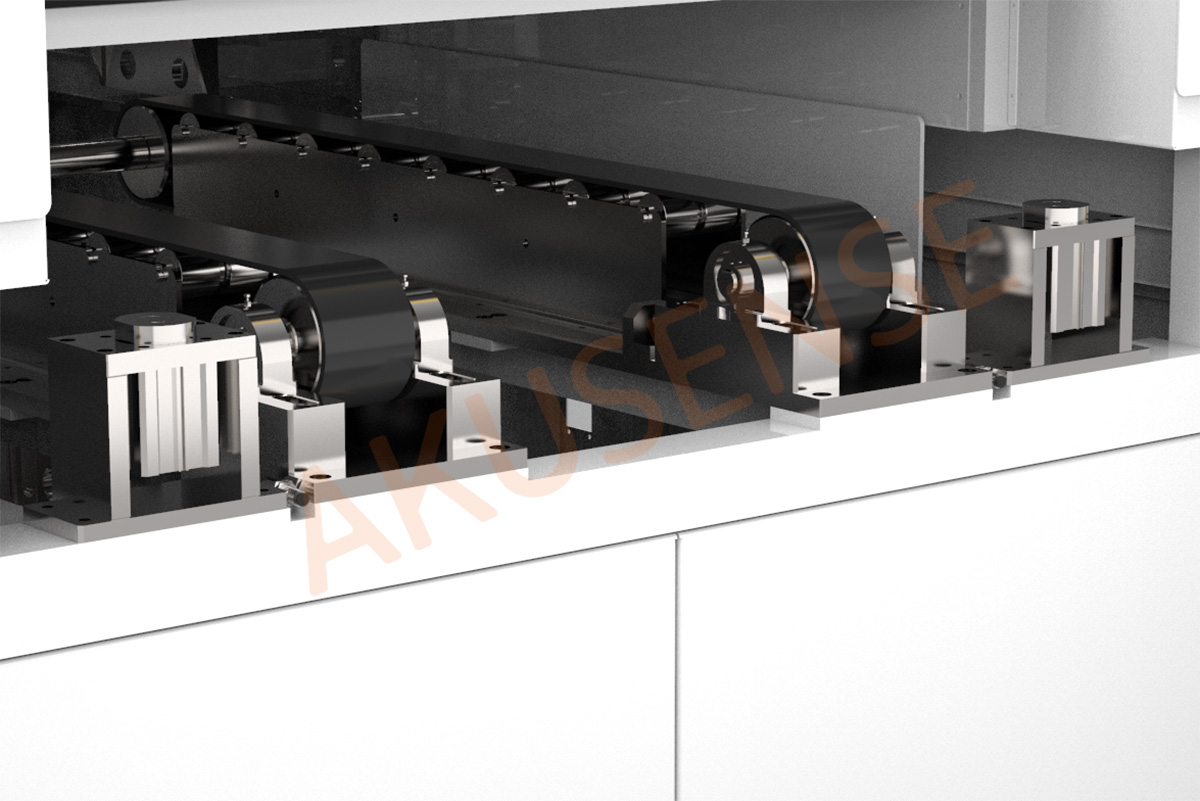
03 Aluminum Shell Dust Removal and Transfer Module
PTE-X09N is installed on the gripper station to detect whether there is material at the gripper. The manufacturing process of limited reflection effectively avoids misjudgment caused by some highly reflective objects, and can stably output the status of the current station.
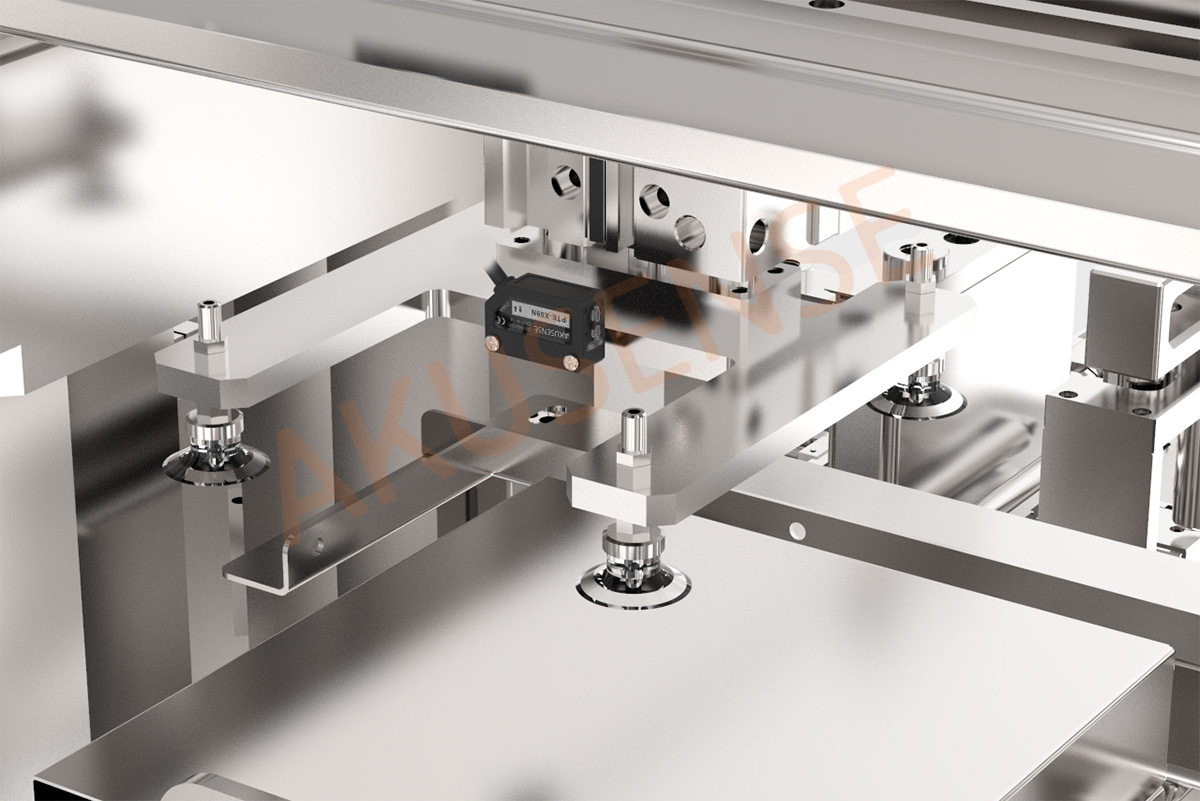
04 Tray Transfer Module
The groove type ST-303N-W is used to detect the empty material tray after the material has been taken out, and the integrated design of the chip makes the groove sensor of Meiji shows more superior mechanical properties, and the repeatability reaches 0.01mm.
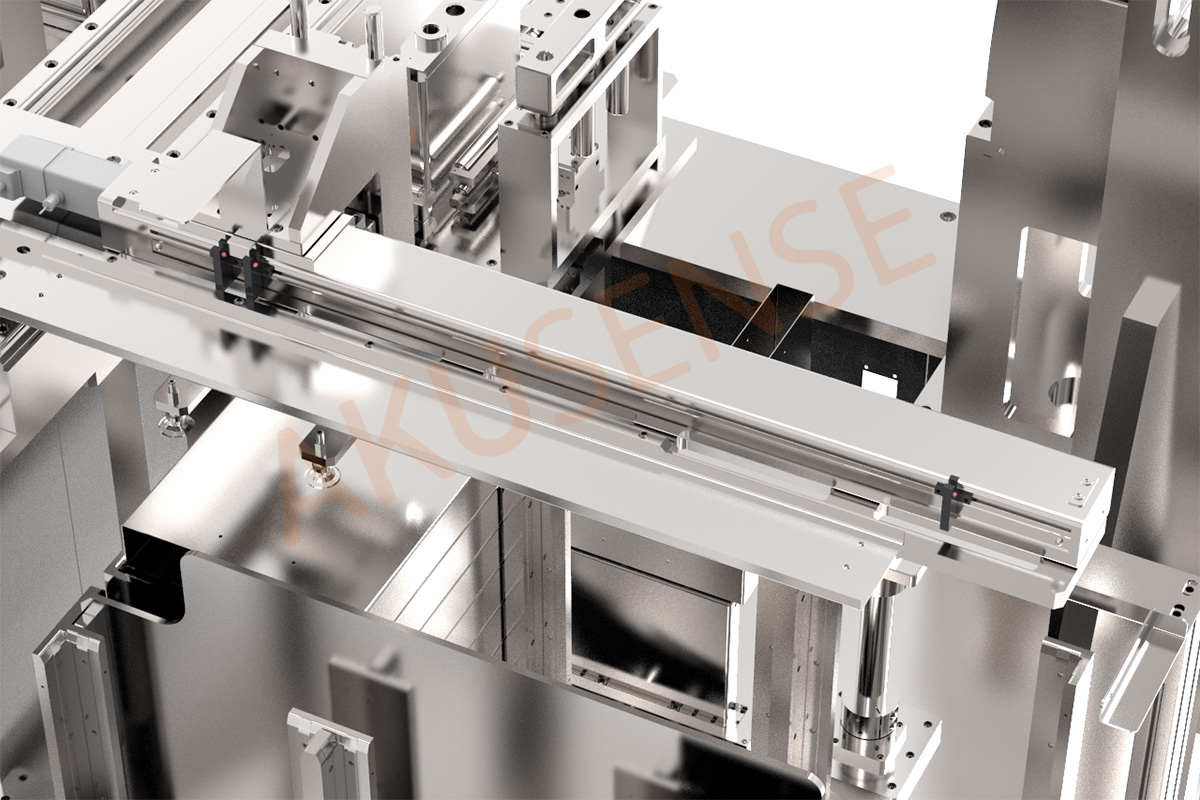
05 Cylinder Station Status Monitoring
Two magnetic sensors MR-C8-C-S are installed to detect the state of all cylinders, one detects the extended state and the other detects the retracted state, the response is fast and the accuracy reaches the micron level.
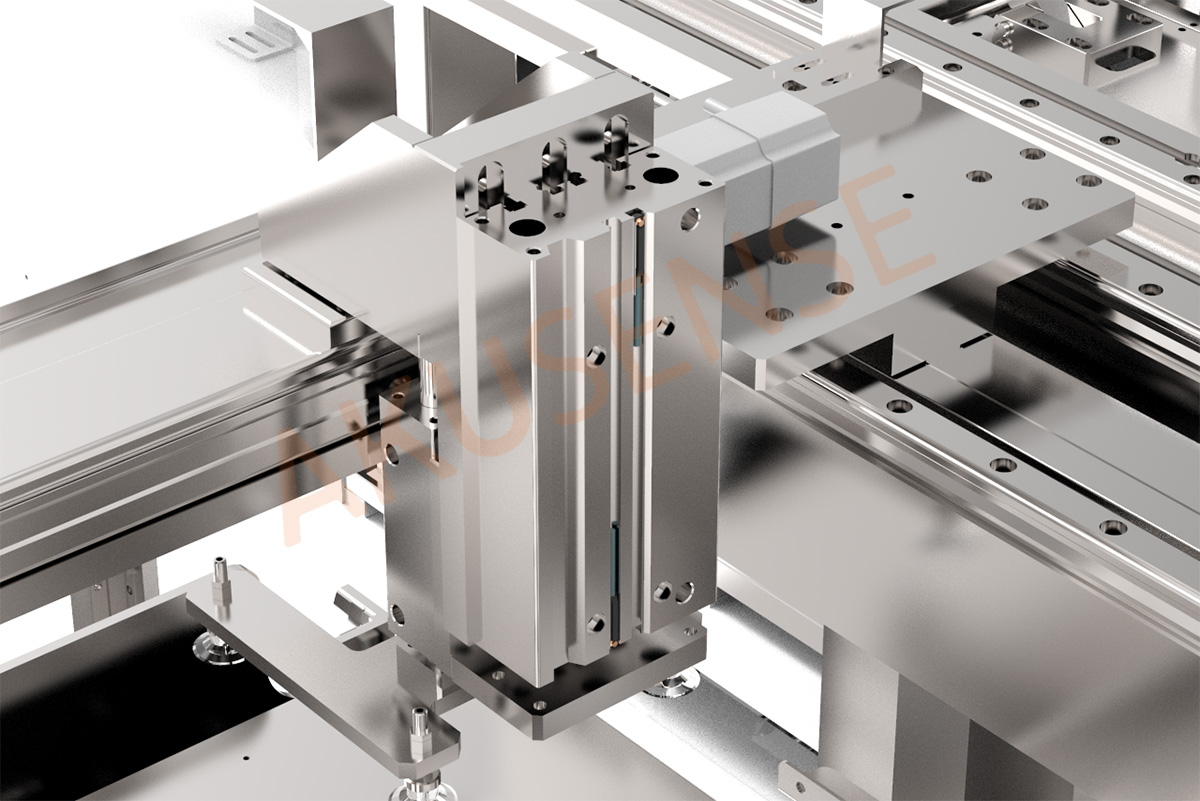
06 Reverse Transfer Module
The battery case after dedusting is picked up by the manipulator and put the station of the shell module. At this time, the bottom sensor ESB-V30N performs in-position detection and triggers the next action cylinder to push the processed battery into the case to complete the process. Station action. This sensor uses an infrared light source, which has a certain inhibitory effect on visible light, and also has a strong background suppression performance and good anti-interference ability, making it efficient and stable to detect in the device.
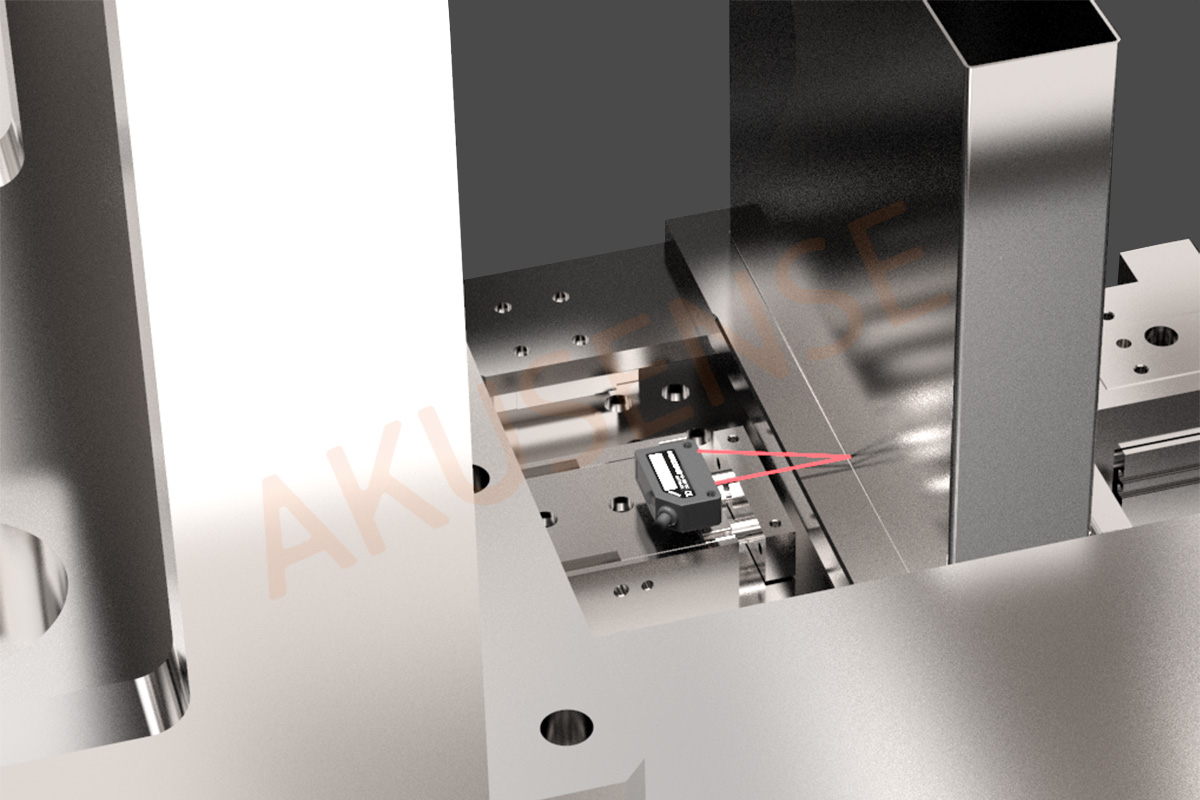
07 Reverse Transfer Module
Here, the battery needs to be reversed 90 degrees, and the QR code needs to be recognized at the same time, which is convenient for recording and tracing. The new RCD-AI100-120W intelligent code reader is used to support the identification of DPM codes of different materials, and it can also effectively read codes under complex conditions such as damaged barcodes, low contrast, and poor printing quality. 4 groups of light sources are independently controlled to support multiple combination of light angles, flexible configuration of luminosity, and polarization options are provided to easily meet the code reading requirements in complex scenes.
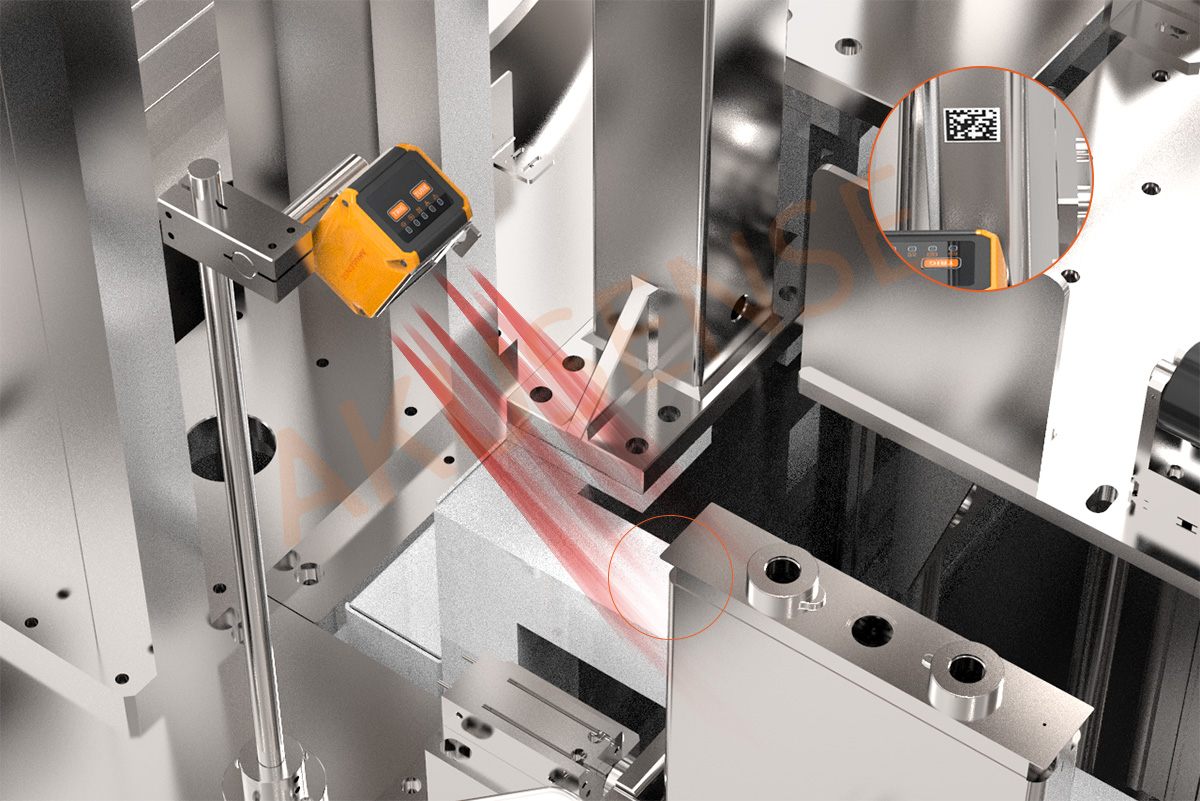
08 Defect Detection
Visual inspection system for battery appearance flaws, defects (scratches, exposed metal, wrinkled, bright spots, particles, falling powder, edge damage, pole piece perforation, pole piece splicing, dark spots, bright spots, dry material spots, foreign matter more than a dozen appearance defects) to make an OK/NG judgment, which not only improves the work accuracy and efficiency, but also reduces labor costs, and also ensures product quality and yield.
